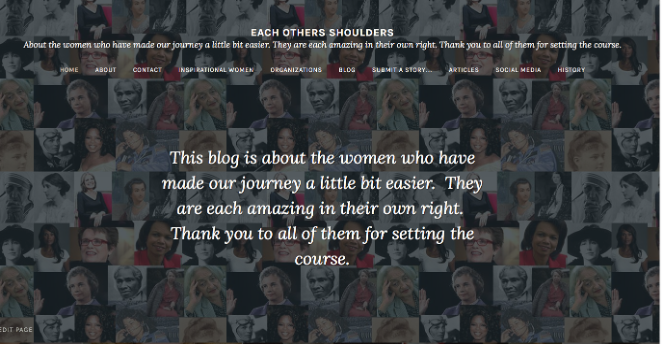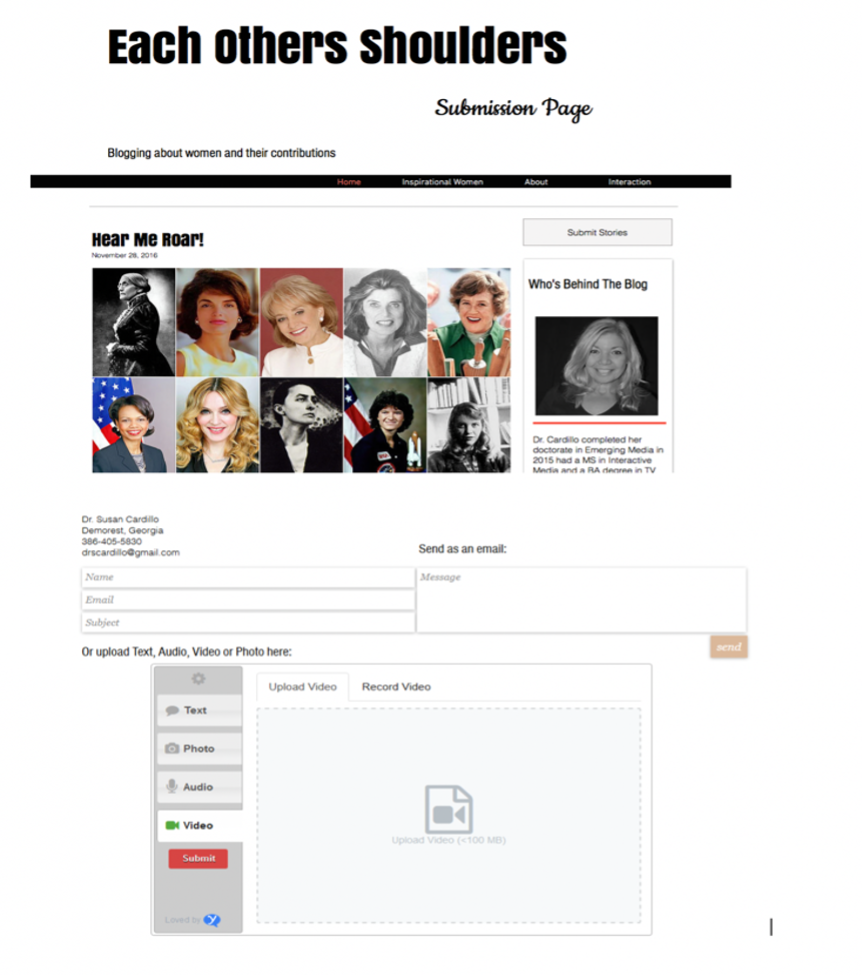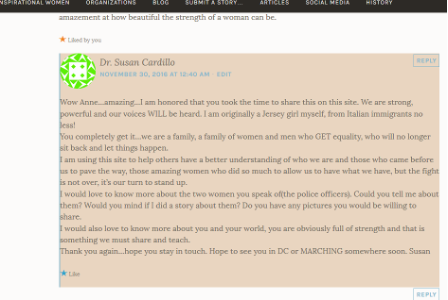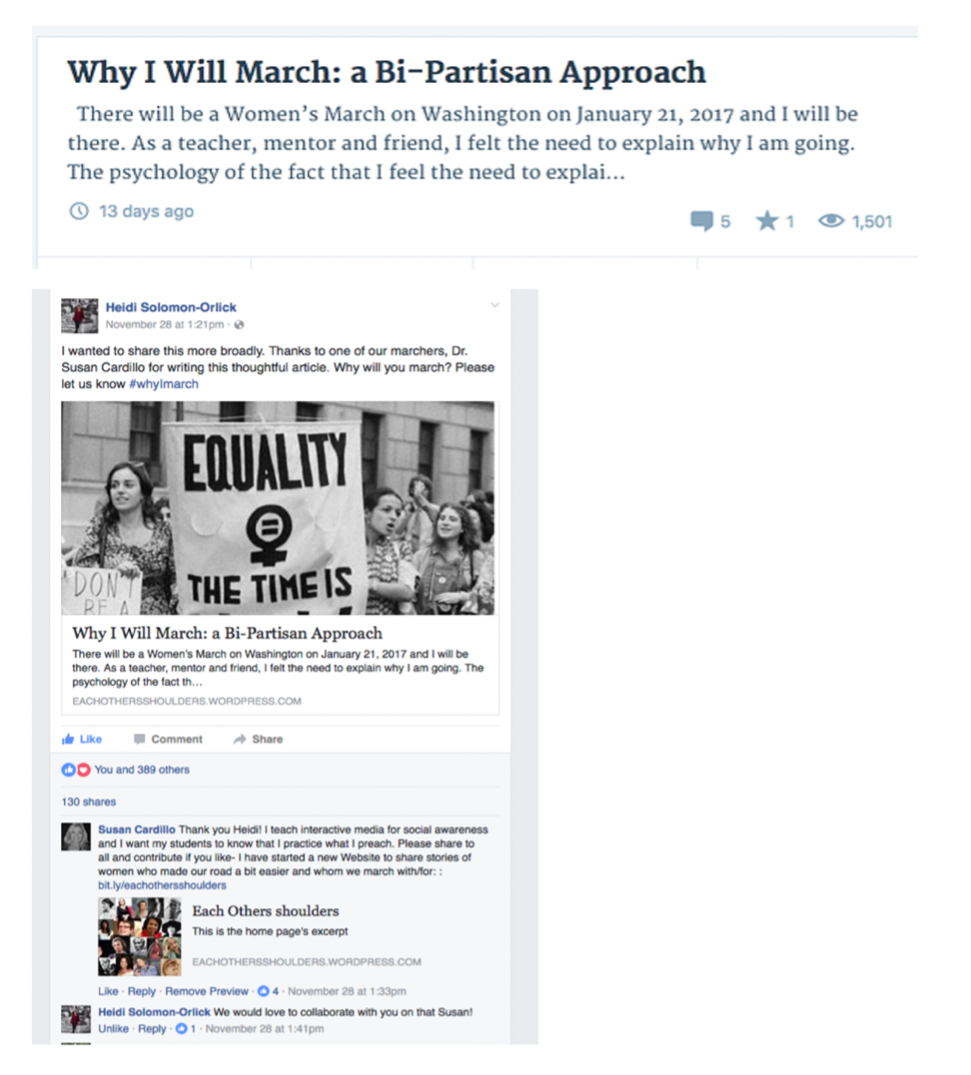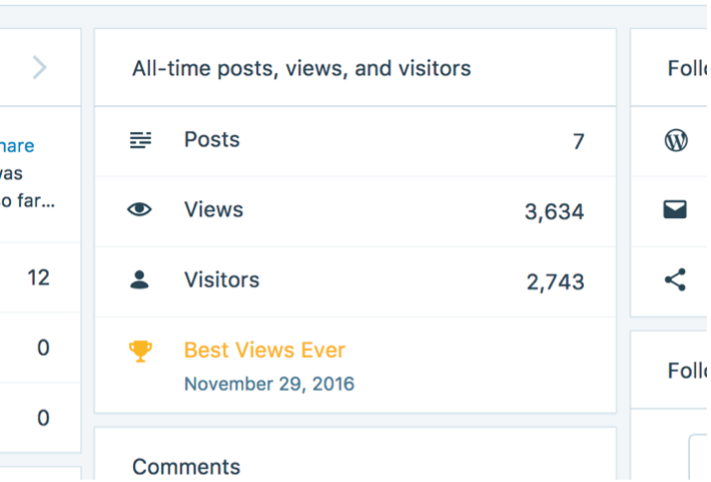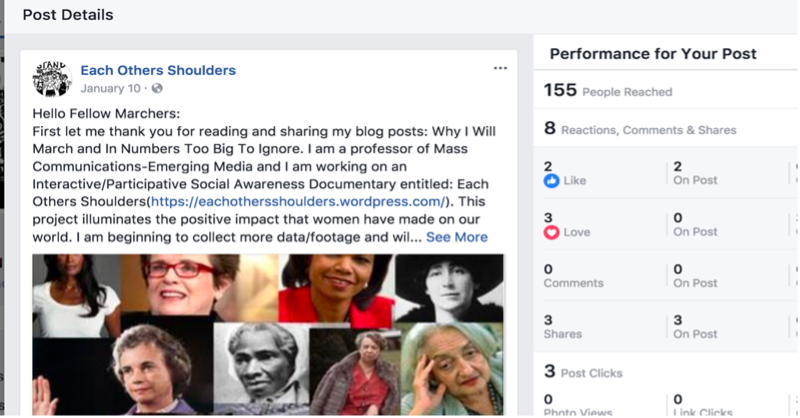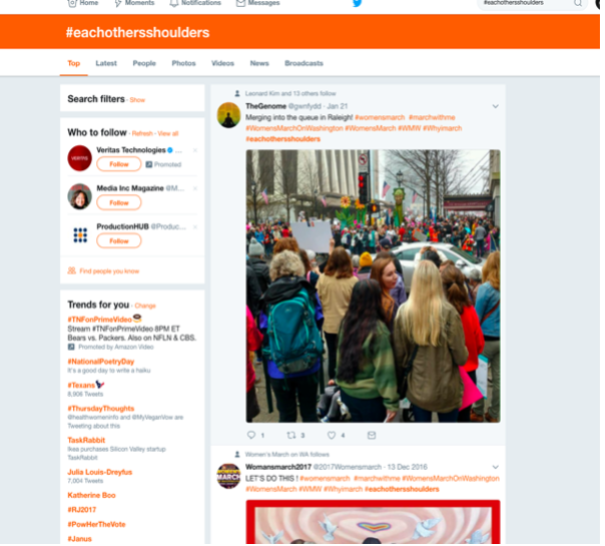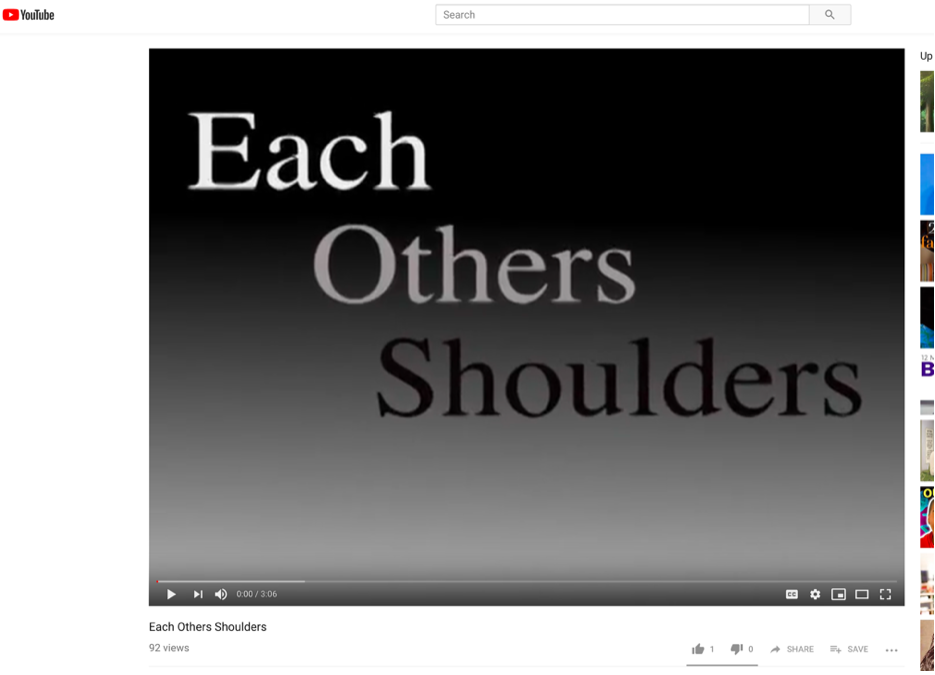While today’s press is undergoing change, intersecting regions, it is important not to overlook the readers – who is the local “us”? This paper investigates how readers generate the relational sense of an “us” in a locality by engaging with the press. The study offers a framework built around three key dynamic concepts: proximity, feelings of closeness, and shared interests – which readers form clusters around, thereby reinforcing the notion of an “us.” Furthermore, local journalists strengthen the notion of an “us” by addressing the readers as a single collective with common features.
Introduction
In today’s changing media climate, newspapers are concerned with issues of increased transmediality, how to retain and increase circulation figures, sell advertising space, and keep distributing papers in their established areas. In this context, it is important not to overlook the readers. What do they engage with? Who comprises “us”1 in a locality?
This paper aims to identify the dynamics around who reads local newspapers and how the readers identify themselves, as well as who the journalists and editors are targeting their content at. This paper focuses on shared associations, intersubjectivity, and engagement in a local vicinity which – together with the local newspaper – may enable readers to perceive themselves as part of something bigger. By sharing their understandings and feelings about what is reported in the newspapers, readers can construct a sense of “us” in interrelation with their locality.
This paper investigates if and how this “us” is formed, what the dynamics and dimensions of this are, and the clusters that readers create around themselves and those who share common characteristics. Furthermore, this includes journalists’ and editors’ viewpoints of these factors.
This paper investigates how the readers share intersubjectivity, association, and engagement through their local press and, thereby, become part of a cluster with shared features, to create a common “us”. We assert that this identity formation in community settings is dynamic and variable along three dimensions: proximity, feelings of closeness, and shared interests – which each require some kind of mediation. These concepts will be explained further later on in this paper, but to summarize it. Proximity, in this context, solely focuses on the sense of geographic or physical nearness. While feelings of closeness focuses on the sense of relational or emotional nearness. Shared interests, focuses around issues or concerns between people who share a proximity or an affectional nearness.
The context: RegPress and Sweden
This paper was produced by the RegPress project team, which investigated what the regional means in a global media culture, in the context of southern Sweden. With the main research question: “What is the role and value of regional media in a global media age?”
RegPress was a cooperative project between Linnaeus University, Sweden; Newcastle University, UK; FOJO2 (Sweden’s leading media development center for professional journalists); and the Barometern Foundation.3
Sweden has some of the highest newspaper readerships in the world, along with state subsidies for the media.4 There are healthy regional and local de-centralized papers. Today, though, local newspapers are facing several new challenges, such as increasing print, broadcast and online media transmediality, declining circulation figures, and difficulties selling advertising space. However, in later years it has proven difficult to provide a complete measure of circulation since some of the largest newspapers have left the common measurement system.
According to Media Landscapes – Expert analyses of the state of media5 there are about 55 percent who read a subscribed morning paper on an average day in Sweden, but this does not show the general household coverage.
The information which follows below in this section is gathered from the TS Media6 website, Kantar Sifo 7 website and the Nordicom website.8
RegPress’s research area comprised the counties of Kalmar (population 237,027), Kronoberg (190,916), and Blekinge (155,733), and the west coast region around Borås (108,083).9 These areas have been well-served by the press for a long period of time dating back to 1841;10 along with a dominant and successful media group that has experienced a low decline of circulation and in some cases even a rise in readership numbers. In these areas, there are about 84 newspapers, including daily press, free newspapers, and newspapers which exist solely on the web. In each area, one paper dominates (circulation-wise), and commonly a secondary paper holds a prominent position. All of the newspapers below have a high subscription level (90 % or above) seen to those who buy the paper.
The main newspapers and their household coverage are:
– Barometern Oskarshamns-Tidningen (54%, 2019)
– Smålandsposten (54%, 2019)
– Blekinge Läns Tidning (50%, 2019)
– Borås Tidning (43.9%, 2016; last updated information)
Each newspaper has a strong local attachment, focusing particularly on its immediate vicinity (nearby towns and cities). Our desk research11 revealed that the local newspapers cover a range of topics, including urban development, events, healthcare, sport, and culture, complemented with broader domestic and international news.
Figures from the SOM Institute show that the subscription rates nationally are in decline, in the 1990s, 81% of the respondents had a daily newspaper subscription, 2014 it was 57 percent, and today 55 %. However, most people in this region still use printed newspapers as their main source of news.13
When it comes to the area’s homogeneity and socioeconomics, there are more similarities than differences. All of the areas have close to half/half male/female population, the greatest variation was 49% to 51%. Kalmar County and Blekinge County have a somewhat older population than the other areas, while the area around Borås has the youngest population.
In regards to secondary education, the areas had a slightly higher percentage (48%) than the national average (47%).
Secondary education:
– Kalmar County (51%)
– Blekinge County (48%)
– Kronoberg County (48%)
– The west coast region around Borås (45%)
However, in regards of post-secondary education, it was slightly lower than the national average (40%). Whilst here it differed between 32% (Kalmar County) to 39% (The Borås area).
Professions, political affiliations, and wages, were all similar in these areas.
Conceptualizing the reader
This paper seeks to understand how geographically-situated newspapers connect with readers in specific localities. Through this, there has also been an increased sense of community in relation to how geographically-situated newspapers connect with readers in specific localities (Hess, 2013). This investigates if and how shared associations and intersubjectivities are formed within the locales and regions covered by local newspapers.
There are efforts today by the press to explore local imagined societies and community traditions to receive and reinforce coherence from the readers (Wenzel, 2019).
It has been established that local media use individual as well as community factors when it comes to constructing the news, which can lead to community participation and solidarity within the community (Paek et al.). Which increases the likelihood of a sense of community with common ties between the readers, a perception of a shared community. Discussions have however been made during later years if this is reinforced by addressing the readers as part of an “us” or a “me.” There have been tendencies which show a shift from “we” to “me” in the construction of journalism (Conboy & Steel, 2010). As people are most concerned with aspects close to themselves.
The conceptual framework we devised to investigate this derives from three aspects:
- Proximity, the sense of geographic or physical nearness,
- Feelings of closeness, the sense of relational or emotional nearness,
- Shared interests, around issues, or concerns where there is an affectional nearness.
These dimensions are interrelated with the notions of community, the local, and local journalism; which are all valuable in order to conceptualize and analyze our data. These concepts are discussed below.
Senses of community
The notion of interpreted senses of an relational and abstract “us” with familiar features has commonly been investigated through the lens of the word “community.” However, the notion of community is difficult to conceptualize, because it lacks any specific analytical characteristics (Hess, 2013).
Scholars and industry are yet to agree on a universal definition to describe small commercial newspapers and they are most commonly referred to as “community media”, “country newspapers”, “rural/regional” or the “local” press (Hess, 2013).
The terms “communities” and “local communities” have frequently been used when discussing journalism in local settings. In more recent research, however, these terms have proven problematic for describing the complexity of a local setting (Hess & Waller, 2013), and the ways that people engage with each other and the media. Hess & Waller (2013) assert that “community” is a layman’s term which lacks analytical clarity. Nonetheless, the concept of community has been preeminent in discussions around newspapers.
Issues around the theoretical concept of “community” have mainly been discussed in terms of newspapers’ online ventures and globalization trends (Hess & Waller, 2017). Hess (2013) offers the term “geo-social” as an alternative to “community,” as it derives from a “sense of place,” geography, space and flows. In understanding our data, we acknowledge the importance of a relational sense of place as well as an actual geographic space, which emerges through the dynamic dimensions of proximity, feelings of closeness, and shared interests. Each of these concepts is discussed in the findings and discussion sections of this paper. The areas we have chosen to look at are served by newspapers which focus on smaller towns and regions, where community newspapers provide connotations of familiarity, shared interests, and collectivity, as well as special interest groups, common values, and links to certain geographic areas (Hess & Waller, 2013).
Based on the notions of constructed communities, there are other aspects to consider as well, particularly from a sociological perspective, where the concept still is prominent (Goe & Noonan, 2007). This is relevant in order to understand shared associations and how the sense of a mutual “us” is created in local proximity.
The idea of community has been around for a long time and is derived from developments of society structures, where secluded rural localities of homogenous social groups developed into urban societies, alongside the issues that affected them as a group interacting in that context (Tichenor et al., 1980). Most areas are not isolated in that way today, because of the changes brought about by globalization, technology, and infrastructure developments.
Nevertheless, certain issues still affect people living in close proximity to each other. One key aspect that enhances a sense of community is the physical environment which enables and/or enhances opportunities for interaction, such as walkable streets (French et al., 2014). However, local newspapers could also be perceived as tangible factors that are shared and discussed by people who live in close proximity to each other.
One thing that has not changed since the days of relatively secluded communities is the fact that everybody is constantly interpreting the world around us. This is something we all do on a daily basis, constructing and reconstructing our impressions. Through these subjective practices, people create intersubjective interplays and, thus, a shared world (Berger, 1991).
Intersubjectivity develops through continuous interactions so that, through interrelation with society, the perceived reality is formed and reinforced through social processes and institutions (Berger & Luckmann, 1991). Journalism and local newspapers can be seen as one such institution (Wahl-Jorgensen & Hanitzsch, 2009) that helps to form a proximity-based intersubjectivity.
It is the journalists’ stories that construct and maintain our shared realities. Because of this, news can become a singularly important form of social glue; our consumption of stories about current events large and small binds us
together in an “imagined community” of co-readers (Wahl-Jorgensen & Hanitzsch, 2009).
Therefore, earlier research has concluded that the world we all perceive and share an intersubjectivity of is, in fact, constructed through our interactions with each other (in close surroundings) and our interrelations with wider society, which are reinforced through institutions such as the local news media. However, in order to understand how local newspapers connect with people at a regional level, it is important to examine how the readers perceive this connection – for example, which issues they share an affinity with. This is conceptualized through the dimensions of proximity, feelings of closeness, and shared interests, to further investigate how the sense of connection is enacted within a local setting.
From a sociological perspective, the concept of community is twofold – including both a common physical and geographic area – for instance, the area where people live or work – and the characteristics of the social relationships people form with each other (Geo & Noonan, 2007). In addition, it has been recognized that community is based on a specific place, with Tönnies and Harris (2001) asserting that community centers around a geographic area and the people who live there, in close proximity to each other (Tönnies & Harries, 2001). Both of these matters are discussed in this paper. Firstly, our study takes place in a specific geographic area, where many of the people we interviewed lived and worked within that same area. Secondly, the relationships they form with others – as mentioned above, their constructed reality – is formed through their interrelations with others and society, including the media.
In 1955 Hillery (1955) pinpointed three key aspects that had been identified through previous research into community, defining it as a group of people who:
– engage in social interactions,
– have ties to a geographic area,
– have ties to each other (like lifestyle, culture, work, beliefs, interests, or more loose ties).
This overview shows that there has been continuous discussion among sociologists about what the concept means and entails. However, “community” can be summed up as a geographic space, a social network, and a type of relationship (Day, 2006). We are aware that a sense of space cannot solely be centered on a geographic space.
Flows within the digital world must also be taken into consideration when discussing community (Hess & Waller, 2013) since many people engage in the digital sphere as well as the non-digital aspects of life. For instance, individuals who no longer live in the geographic proximity that a local newspaper covers may still feel a connection to that place, so engage with the news through a digital platform (Robinson, 2015). This is something we will investigate further in our findings and discussion, particularly in regard to the conceptual dimension “feelings of closeness.”
Senses of the “local” and local journalism
This paper aims to contribute to the debate about geographically-situated newspapers and the relationship between those who read it and the area it is circulated in. It is therefore crucial to understand what comprises a sense of the “local.” Since journalists in the local proximity is not just watchers of the community, but a part of it (Batsell, 2015).
It has been argued that “local”, as in local media, is another ambiguous and problematic term, like “community”; because vast amounts of local media today are only really local in name, being actually based at a central point somewhere outside the immediate area (Hess & Waller, 2017). However, in this paper, local newspapers are identified as news providers that serve a specific geographic area (not nationally) and exist in that locality, are regularly circulated, and contain news and information which meets the definitions used in Key concepts in journalism studies (Franklin, 2005).
Local media has been identified as a tool to emphasize the connection between people, and as a platform to express matters of importance for the population of an area (Hess &Waller, 2017; Franklin, 2005; Lauterer, 2006). The local news media try to attract the people who live within a specific area, by providing them with news which is relevant to that group. People who live in small towns and rural areas depend on their local paper to connect with each other and the locality (Lauterer, 2006). To create this sense of community – both from a sociological and a media perspective, as discussed above – the newspapers attempt to target their content at a specific group and, through that practice, assist in shaping and creating a sense of “us-ness,” a shared intersubjectivity, associations, and engagement, within the local vicinity.
The local and regional press play a dual role in their localities. Firstly, they are actors in the life of the local area. Secondly, they co-create a sense of the local and regional. Local and regional press is an under-researched area (Hanusch, 2015), so this study makes an important contribution to the knowledge of local media and its relation to the public, the public’s relation to local media, and through this, to each other.
We argue that the conceptual dimensions we introduced at the beginning of this paper – proximity, feelings of closeness and shared interests – are dynamic and change during the course of reporting news. Different readers are interested in different kinds of news.
Earlier research has established that journalism has a role to play in communities (here defined as people who live in close proximity to each other and share (at least partly) interests and values) (Goe & Noonan, 2007). This consists of informing the public, reporting citizens and their representatives about matters of public interest, and leading advocacy and debate (Bartzen Culver, 2014). Local press is rooted within the lived experience of those who live close by in the locality, which helps in constructing their realities (Howley, 2005). Readers who feel a connection to news stories or a part of the locality that the stories affect believe that the news affects them and has meaning for them (Hartley, 2009).
Hatcher and Haavik (2015) found that Norwegian local journalists’ news values depended on their relationships with the community and their place as members of the community. This concurs with research conducted in the mid-1900s (Janowitz, 1951), which proclaimed that press in a community setting acts as a system that aims to maintain a consensus based on common values.
“Proximity” is a key term in this paper. This includes news and events which are geographically close to the readers and so are seen as important and valuable for both readers and journalists. Moreover, proximity can be perceived in an emotional sense as well (Hess & Waller, 2013).
Research has shown (Hatcher and Haavik, 2015; Yamamoto, 2011; Hartley, 2009) that people who read a local newspaper feel a connection to the locality, so local newspapers are one important way to engage with the community. In this paper, we argue that there is a connection between attachment, involvement, and participation in a community, and reading the local newspaper. There is a sense of social coherence in the area that is covered by a newspaper and is defined by that. The locality shares common values, which support social networks and help to form a collective identity (Yamamoto, 2011). This brings us back to our study’s key research questions – who comprises “us” in the local setting? How is the sense of “us-ness” formed?
Methodology
This research applies a mixed methods research design, which offers a complementary pluralistic strategy (Johnson & Onwuegbuzie, 2004). The data is based upon empirical data obtained from 65 semi-structured interviews intersecting these three regions in South East and South West Sweden, involving 9,413 survey respondents, 8 focus groups, and 9 elite/expert interviews (with journalists and editors), during 2016.
This study mainly used snowball sampling when it comes to the semi-structured interviews (across our regions), since this enabled us to gain more respondents through the potential sample members (Everitt, 2002). The survey14 covered all three regions (with some additional respondents living outside them) and was distributed by Linnaeus University and Gota Media.15 The content of the survey was designed upon the information gathered by the qualitative interviews with readers. The survey consisted of an online questionnaire which asked newspaper readers about their media use, as well as their socioeconomic circumstances, to ensure a diversity of respondents. The survey provides descriptive statistics (Ostle, 2012) in our empirical data.
This paper discusses data from reader interviews, surveys and interviews with journalists and editors, not from the focus groups.
Findings
General trends. The data confirmed that most respondents read their local newspapers (about 96 percent), while only 43% read the national news; showing that the proximity matters in their choice of news outlets. Through the practice of reading a paper, the reader forms mutual, dynamic patterns of association, gaining a sense of connectedness, and shared understandings. These patterns of association and engagement vary in accordance with the factors of proximity, feelings of closeness, and shared interests. Readers create relational and dynamic clusters of perceived importance around these, some of which are shared with others living in close proximity. This kind of intersubjectivity is also important from the journalists’ point of view, which is why this section of our paper includes journalists’ responses.
The most important of our three theoretical concepts is proximity – firstly the immediate area around an individual, their hometown or city, followed by the municipality, and then the county. The local society can also be considered an active participant, not just an area division, because it impacts on the local setting.
Proximity. The issues that matter most to readers are those that happen the closest. “Closest” here can be specific to an area or to an issue. For some readers, the closest proximity means their immediate circle, such as their neighborhood. For other readers, proximity is a wider concept which branches out to places where they work or have some other relationship to – for instance, their children’s school, or the store where they buy their groceries.
With the local news, I feel I am a part of the local community; they talk about issues that are relevant for me (RP1:16 Man, over 60, post-secondary education). The newspaper is an important tool for finding out what is happening in the local proximity, according to 78% of our survey respondents, while 45% believed that the local paper helped them feel part of the local “community” – at least sometimes. Only about 4 percent of respondents never felt that the local paper helped them feel part of local society. The local press acts as a social glue which holds areas together by reporting current events which the reader perceives to be important – according to both the literature (Wahl-Jorgensen & Hanitzsch, 2009) and our respondents.
The readers perceive, define and talk about themselves as members of a group, and a sense of shared realities is vital for this. This varies in accordance with issues and areas. People living in close proximity to each other perceive a shared intersubjectivity, which is constructed and reinforced through interacting with each other, but also through interacting with institutions (Wahl-Jorgensen & Hanitzsch, 2009), such as the local newspaper.
It is fairly typical for the local newspapers to follow local politicians and decision making in the city, mixed with family news, organizations’ news, and trivial things that are happening. And all of it is the glue between people and creates a collective “yes that’s right, it was in the newspaper.” So, I think the local newspapers have a social function, it’s only local news media that can do it… But also as a social glue, a reinforced feeling of “us,” especially where I live among the people in my neighborhood, but also where I work (RP2: Woman, 41-60, masters-level education).
The Swedish word “närområde,” meaning “immediate area” was used frequently and prominently by interviewees discussing close proximities. As Goe and Noonan (2007) assert, physical and geographic spaces are still extremely important for forming a sense of community. People who live and work in a certain locality want to know what is happening in the immediate area because it matters to them and affects them. It has high relevance for them, as individuals and as a group; through shared associations and interactions with members of the locality, they become members of a collective. Some participants used the word “gemenskap,” or “community” to describe this attribute, as well as mentioning their collective engagement.
People within a locality engage in social interactions and share ties to the local proximity and each other, through mutual interests and values (Hillery, 1955).
Local newspapers are really important to me. I want to keep track of what is happening in my immediate area, in politics, culture, and everything else that is important for a society. With the help of newspapers, we bind together to form a whole and not as fragmented, all of us who live in […] are affected by what is happening here and, with the newspapers’ help, we are woven together and merge into a larger collective than those you would otherwise be close to – your neighbors and your colleagues. With the newspapers, we become part of a greater whole (RP3: Woman, 26-40, bachelors-level education).
The “närhetsfaktorn” or “closeness factor” was also prevalent when discussing proximity, being defined as the dynamic relationship between the closeness of something and its importance. It was notable that individuals did not consider everything in close proximity to be relevant to them, but this dynamic enables people to form a cluster around what does – or does not – matter. The “closeness factor” also provides a tool for readers to navigate through all the material in a newspaper and offers a pathway into shared associations in the immediate vicinity.
…they report the news so that it will be interesting for me as a reader, mainly with the proximity factor that I mentioned earlier… It might be good to start reading the newspaper to get into the community, I had not really thought about that before… (RP4: Woman, 18-25, bachelors-level education).
Everything that happens locally is very interesting, of course. Everything that happens in […] is very interesting to me because I live here. Even trivial news is interesting. If a garden shed burns down somewhere, I want to know. I would not care if it happened in Halland [other part of Sweden] (RP5: Man, 26-40, post-secondary education).
Journalists described proximity as both a geographically-demarcated area and a connection between people living near to each other. Existing shared associations are enhanced by tangible factors such as a newspaper’s geographic orientation and ambition to reinforce intersubjectivity, which creates group feelings of “us-ness,” or senses of community, as French et al. (2014) observe. Thus, understandings of what is local can be formed through a symbiotic relationship between local journalists and their readers (Lauterer, 2006).
Well, local community is a group of people geographically, but above all sociological demarcated, therefore that you somehow feel that you have a community that interacts together. I think that’s a bit more important than the geographical; the geographical can be divided in any way (RP6: Editor).
As mentioned above, local media has traditionally been identified as a tool to emphasize the connections between people and a place, through its tendency to publish things of importance for the locality (Hess & Waller, 2017; Franklin, 2005; Lauterer, 2006). Local journalists and editors live and work in close proximity to their readers, while people depend on the local paper to connect with the area and each other, and to gain information that interests and affects them (Lauterer, 2006). Journalists discussed their interactions with local society as both relevant and unavoidable, since they depend on this connection with others to do their job. Furthermore, they talked about these exchanges as being essential for gaining ideas from, and initiating discussions in, the locality.
As a journalist, I think I’d rather not write about things that concern the area nearest to where I live. I think that’s too close to me, so it can be difficult for me to be objective, like when it’s as close as my children’s schools, or nursery. Therefore, I would rather not cover that. I think it’s better as a journalist to monitor other areas of the slightly wider local community, like issues at large in the region. But I would prefer not to write about things related to those very closest to me (RP7: Journalist).
Feelings of closeness. Feelings of closeness are, in some respects, linked to proximity, although where proximity denotes an actual physical closeness, feelings of closeness derive more from an emotional sense of how a person perceives closeness and what they feel as close to them. An important term in discussing feelings of closeness is “lokalanknytnig,” that is, “local attachment.” Readers explained that they felt a sense of closeness, or local attachment, to a certain area and what went on there. This attachment forms when a reader feels a connection to stories which contain something that affects them personally and, therefore, has meanings for them Hartley (2009).
For some, this local attachment came from the close physical proximity mentioned above but, for others, it was a connection to a place they had once lived, where their parents lived, or something they felt an affinity to. As Hess (2013) remarks about the “geo-social,” it comes from a “sense of place,” which might not necessarily be a physical space, but could also be a relational one.
Even those who report the news can make use of local attachment by adapting broader news articles to fit a local level, making them more relevant for their readers. Newspapers contain different sections to guide their readers to certain subject matters, and reinforce the feeling of closeness.
[…] is good at covering what’s happening locally, I really get the feeling that I know what is happening in […] by reading the newspaper. What they write about tends to be relevant to us who live in the city and not just meaningless chatter to fill the newspaper, I think that is good. Sometimes I see a news story that I read about in the DN [a national newspaper in Sweden] and SvD [a national newspaper in Sweden] that has been taken down to a local level in […] and I think that’s good because it gives a perspective on its significance locally. I really think they are good at making a local connection in the news and I think that means that it feels more like the news affects me; it makes the news more interesting for me as a reader (RP3: Woman, 26-40, bachelors-level education).
This local attachment creates a bond of intimacy between the news and the reader, as well as producing a sense of connectedness to the locality. This was noticeable in both the survey and the interviews. This feeling of closeness also generates ties of association in the places where people live and work, and those they share common experiences with (such as reading the same reports and being affected by them). Thus, it serves a social function by connecting people who read the same news stories. They become part of a mutual understanding in a shared context, which creates a common “us.”
The journalists and editors interviewed said that the most important thing local journalists should do was make their readers believe that the paper had a local affinity with them. The goal was to be perceived as being close to the readers, so they felt the coverage was meant for them and would feel close to the things reported. They said it was difficult for the news they reported to affect everyone who read it, but they tried to reach those people who were personally impacted by stories. They aimed to provide diverse content, to appeal to the wider public.
The best news is that kind that concerns lots of people (RP8: Journalist).
The practitioners stated that your immediate locality is the place where you are interested in the smaller issues and, within which a sense of belonging, “us,” is developed. This “us” has similar interests as a group and is (at least partly) affected by the same things. Local journalism also contributes towards creating the sense of local and regional because their choice of what to report or omit defines the boundaries of a perceived locality (Hanusch, 2015).
Shared interests. Events that occur in a person’s immediate vicinity are perceived by them as the most important (however, the definition of an “immediate vicinity” varies). The close locality, where an individual feels a sense of connectedness, a sense of engagement and a shared intersubjectivity, is the area they are most affected by in relation to smaller issues (such as the school their family members attend or local healthcare). These are examples of the elements the papers cover which influence people’s constructions of their perceived realities (Howley, 2005) People in the immediate area have some kind of fundamental common interests, including issues that are important to them, both as individuals and as group members. The more nearby the issues were, the more important they were perceived as.
For me, local journalism is important. It is important to be informed about events both in the world, in Sweden but also in my city […]. I believe that, as a citizen, I have a duty to be aware of what’s happening in my community locally, nationally, and worldwide. I also need to be informed because of my role as a teacher, in order to participate in discussions about what is happening, with both the children and my colleagues (RP9: Woman, 18-25, bachelors-level education).
Issues in the close locality, mediated through local media, offer a regional context, providing shared knowledge and conversation points. People get the information they feel they need, about the things they perceive to be relevant to them.
The local press is absolutely vital. Because you need to have a local attachment that makes it interesting for the individual. There are many big newspapers who write about things that are national and international, but I think it’s important to have the local perspective also and not to drop it (RP10: Woman, 26-40, masters-level education).
The practitioners asserted that journalism takes place in relation to the public and, therefore, the articles must have relevance for them. They said that a reporter’s purpose is to cover relevant and important issues – both those that are being talked about, and others – to help readers orient themselves in society.
I think if you read the local newspaper you expect it to be written for the readers at a close level. We are out where they are and we write about their schools, homes for the elderly, in a very close way, not only do we describe it in great detail, but we actually are out where they are. I definitely think the readers want us to be as involved as possible. If it’s something at an individual school we write about it, and perhaps it’s just the people who live there, in that particular area, who are really interested in it, but we write it for them and the next time we are in another area (RP6: Journalist).
The issues reported should be close to the readers and must resonate with them personally, according to the professionals. However, a recurrent theme that emerged in the interviews was a journalistic ambition to cover as much as possible of what was relevant to the people living in the local area. Two factors they considered in this were space and time, along with how many people were affected. The goal was to have a mix of these, since nothing would interest everybody, but some things interested some people. Above all, they felt there was a need to ensure local attachment, to make the news seem relevant.
Discussion
This paper explores notions of shared intersubjectivity and engagement, in order to develop a deeper understanding of people who read their local newspapers (in the context of south Sweden), and how they create a sense of a dynamic “us” through that practice. This perception changes depending on the clusters formed around proximity, feelings of closeness, and shared interests.
The findings showed a sense of clusters forming around these concepts, both at an individual level, but also as group members, in people’s local areas. This point became apparent in earlier research which found that a shared sense of “us” was formed through dynamic relationships between people living within close proximity to each other and local news (French et al., 2014; Day 2006; Robinson, 2015; Hillery, 1955; Goe & Noonan, 2007; Tichenor et al., 1980). Some common elements of this sense of community and the notion of an “us” (for both consumers and producers) were shared values, ties to a geographic area, ties to each other, and social interactions.
These “us-ness” clusters are also generated by other key factors which were evident in both the literature and our interviews – common interests or issues, things that affect people as individuals, and as members of a group. Respondents felt that this created a sense of “us” and a dynamic cluster, where they could share patterns of association and engagement with other people in that same local proximity and context. This shows similarities with other researchers’ results – for instance, Tichenor et al. (1980) stated that shared associations interact when issues affect people as a group, while Hess (2013) asserted that news channels have an influential position on social flows in a local context.
Both proximity and a feeling of closeness were vital from the readers’ and the journalist’ points of view, as was a desire to connect. Readers want to read about things within close proximity that affect them, and journalists want to write about things that affect the readers in their own vicinity. This finding is supported by previous research about local and community newspapers (e.g. Hess &Waller, 2017; Franklin, 2005; Lauterer, 2006). Respondents explained that they felt this sense of connection through their engagement with, and links to, a geographic area; ties to each other through shared interests, work, lifestyle, culture etcetera.; and social interactions with each other within a group. These are the same criteria that Hillery (1955) considered necessary in order to have and reinforce a community – what we refer to as a dynamic cluster – and, through this, create a common “us.”
This creates connectedness to a locality, which aligns with the journalists’ belief that their task is to connect with the readers. News articles must be relevant for those who read them, but papers should still cover as many topics as possible, because not all the readers feel a connection to all the stories published, resulting in more generalist reporting.
By being part of the same news space and, particularly, reading news that affects them personally, readers form their own notion of a cluster or a group, a distinct “us,” while journalists must make assumptions about their intended public which help to create these clusters, by setting the agenda of what comprises a “newsworthy” story. In order to reinforce a successful community, it is important to know your audience and to choose which information to disseminate based upon that insight (Safko, 2012). People who read their local newspaper feel a connection to the locality, so these papers are important for engaging with and in the community, as Yamamoto (2011) notes. It helps people to form a collective around common values.
The sense of “us” and the clusters which arise from this, are dynamic and fluid, depending on proximity, feelings of closeness, and shared interests. It is also important to recognize that not all the people who read local news feel this way. However, the result is still significant, because many people who read the newspaper do see themselves as part of a collective, contributors to an “us.”
Similarly, journalists help to create the sense of a common “us” through their attempts to communicate with their readers as members of a group with common characteristics, such as shared interests. In this way, the journalists reinforce intersubjectivity, engagement, associations and the sense of a local “us.”
Conclusion
In this media-saturated, globalized world, journalists and newspapers need to understand how their readers cluster around particular interests in a local setting and how this creates a sense of “us-ness” in relation to others nearby. Since the focus here is local newspapers, there’s a given sense of content density. Because the media content must, in some way, relate to its audience. A local audience wants to learn about local news. However, relating to the news can create a sense of an “us.” Not only by publishing news of a certain local content density but how the news was presented and perceived.
In today’s media climate there is a lot to be said in regards of reader engagement, however this article strived to investigate how the reader perceives themselves and their community.
This study has identified the three dynamic key factors of local newspaper readership – proximity, feelings of closeness and shared interests. We have developed a conceptual
framework from this to understand the dynamic clustering of interests and feelings of closeness which are enacted by people living in the local community and through the relations between local newspapers, local journalists, and citizens. Local journalists and their journalistic practice can be seen as a catalyst in creating a sense of “us-ness.”
However, it is important to recognize that our findings were generated in a context where there is a strong and influential press, with high rates of newspaper subscriptions, in one area of Sweden. This represents an active readership, which the local press work hard to sustain. Not only by publishing news, the local press is also present in the society in other ways than just as a publisher, such as sponsoring events and cooperating actively with the municipalities and the other organizers in public events – which they use as part of sustaining their trademark and publicistic values.
It is still uncertain whether community is the right word to use in this context, due to the lack of clarity. We have chosen to include it mainly because it was the term readers used when describing themselves, and it matches previous research about what constitutes community.
Either way, there is a clear sense of an “us-ness,” or a dynamic clustering, which forms around the three dimensions described.
In order to develop this research further, one idea would be to use the same research design to discover how this interplay occurs in other parts of Sweden or within other Nordic countries, using this study as a basis. Another potential future line of inquiry would be to include younger people (aged 15-18), to ascertain how their use of local media differs in terms of engagement, intersubjectivity, and shared associations. In that case, it might be beneficial to adapt the research design according to the geo-social concept discussed by Hess and Waller (2013), because this might be even more relevant for young audiences’ media engagement in the digital world.
End Notes
- “Us”, from the Swedish word “vi”, here means the sense of belonging to a community of like-minded people.
- http://fojo.se/om-fojo/om-fojo
- https://stiftelsenbarometern.se/
- https://medialandscapes.org/country/sweden
- https://medialandscapes.org/country/sweden
- TS Media is an impartial media audit, which examines Swedish media and the media market. https://ts.se/
- Kantar Sifo is a Swedish company that conducts market research, media and opinion polls. https://www.kantarsifo.se/
- Nordicom is a Nordic knowledge center for media and communication, and it’s an institution within the Nordic council of ministers (Nordiska Ministerrådet).
- SCB, 2015.
- https://kundcenter.barometern.se/om-var-historia/
- 11 Regpress, LNU. https://lnu.se/globalassets/dokument—gemensamma/regpress/regpress_preliminary-content-analysis-1.pdf
- https://medialandscapes.org/country/sweden
- The SOM Institute: https://som.gu.se/
- through SurveyMonkey.
- The dominant regional media group.
- To ensure anonymity, survey, interview and focus group respondents are referred to as a numbered ‘RP’ instead of their name, and some socioeconomic details about them are provided for context.
Works Cited
- Batsell, J. (2015). Engaged Journalism: Connecting with Digitally Empowered News Audiences.
New York: Columbia University Press.
- Bartzen Culver, K. (2014). Advocacy and Infrastructure: Community newspapers, ethics and information needs. Journalism Practice, 8(2), 137-148. doi: 10.1080/17512786.2013.859826
- Berger, P. L., & Luckmann, T. (1991). The social construction of reality: a treatise in the sociology of knowledge. London: Penguin.
- Conboy, M. & Steel, J. (2010). From “We” to “Me”. Journalism Studies: The Future of Journalism, 11(4), pp. 500-510. doi: https://doi.org/10.1080/14616701003638368
- Day G. (2006). Community and everyday life. New York, NY: Taylor & Francis.
- Everitt, B. (2002). A handbook of statistical analyses using S-PLUS (2.nd ed.). Boca Raton: Chapman and Hall CRC
- Franklin, Bea. (2005). Key concepts in journalism studies. London: SAGE.
- French, S., Wood, L., Foster S. A., Giles-Corti, B., Frank L,. & Learnihan, V. (2014). Sense of Community and Its Association With the Neighborhood Built Environment. Environment and Behavior, 46(6), 677-697. doi: 10.1177/0013916512469098.
- Goe, W., & Noonan, S. (2007). The sociology of community. In C. D. Bryant & D. L. Peck (Eds.), 21st Century Sociology (2nd ed, pp. 455-464). Thousand Oaks, CA: SAGE Publications.Hanusch, F. (2015). A Different Breed Altogether? Journalism Studies, 16(6), 816-833. doi: 10.1080/1461670X.2014.950880
- Hartley, J. (2009). Journalism and popular culture. In: K. Wahl-Jorgensen & T. Hanitzsch (Eds.)
The Handbook of Journalism Studies (1st ed, pp. 310-324). New York: Routledge.
- Hatcher, J. & Haavik, E., (2015). “We write with our hearts”: How community identity shapes Norwegian community journalists’ news values. In: S. Robinson (Ed.) Community journalism midst media revolution (1st ed, pp. 37-52). London: Routledge.
- Hess, K. (2013). Breaking Boundaries. Digital Journalism, 1(1), 48-63. doi: 10.1080/21670811.2012.714933.
- Hess, K & Waller, L. (2013). Geo-Social Journalism. Journalism Practice, 8(2), 121-136. doi: 10.1080/17512786.2013.859825.
- Hess, K., & Waller L. (2017). Local Journalism in a Digital World. London: Palgrave.
- Hillery Jr., G. A. (1955). Definitions of community: areas of agreement. Rural Sociology, 20(2),
111-123. doi: citeulike:10175436.
- Howley, K. (2005). Community media: people, places and communication technologies.
Cambridge: Cambridge University Press.
- Janowitz, M. (1951). The Imagery of the Urban Community Press. Princeton University Press, 15(3), 519-531. doi: 10.1086/266332
- Johnson, R. B., & Onwuegbuzie, J. A. (2004). Mixed Methods Research: A Research Paradigm Whose Time Has Come. Educational Researcher, 7(33), 14-26. doi: 10.3102/0013189X033007014.
- Lauterer, J. (2006). Community Journalism: Relentlessly Local. Chapel Hill: The University of North Carolina Press.
- Ostle, B. (2012). Statistics in research: Basic concepts and techniques for research workers.
Iowa City: Iowa State University Press.
- Paek, H-J., Yoon, S-H., Shah, D V. (2005). Local News, Social Integration, and Community Participation: Hierarchical Linear Modeling of Contextual and Cross-Level Effects. Journalism & mass communication quarterly, 82(3), pp. 587-606. doi: https://doi.org/10.1177/107769900508200307
- Robinson, S. (2015). Community journalism amidst media revolution. London: Routledge. Safko, L. (2012). The social media bible: tactics, tools & strategies for business success
Hoboken, N.J.: Wiley.
- Tichenor, P. J., Donohue, G. A., & Olien, C. N. (1980). Community conflict & the press. Sage Publications.
- Tönnies, F., & Harris, J. (2001). Community and civil society. Cambridge: Cambridge University Press.
- Wahl-Jorgensen, K., & Hanitzsch, T. (2009). The handbook of journalism studies. New York: Routledge.
- Wenzel, A. (2019). Engaged Journalism in Rural Communities, Journalism Practice, 13(6), 708-722. doi: 10.1080/17512786.2018.1562360
- Yamamoto, M. (2011). Community Newspaper Use Promotes Social Cohesion. Newspaper Research Journal, 32(1), 19-33. doi:10.1177/073953291103200103.
About the Authors
Emelie Kempe (main author) (Linnaeus University) can be reached at [email protected].
Annelie Ekelin (Senior Lecture, Linnaeus University) can be reached at [email protected].
Anette Forsberg (Senior Lecture, Linnaeus University) can be reached at [email protected].
Britt-Marie Ringfjord (Linnaus University) can be reached at [email protected].
Mats Wahlberg (Linnaeus University) can be reached at [email protected].
Bridgette Wessels (Professor, Glasgow University) can be reached at [email protected].
